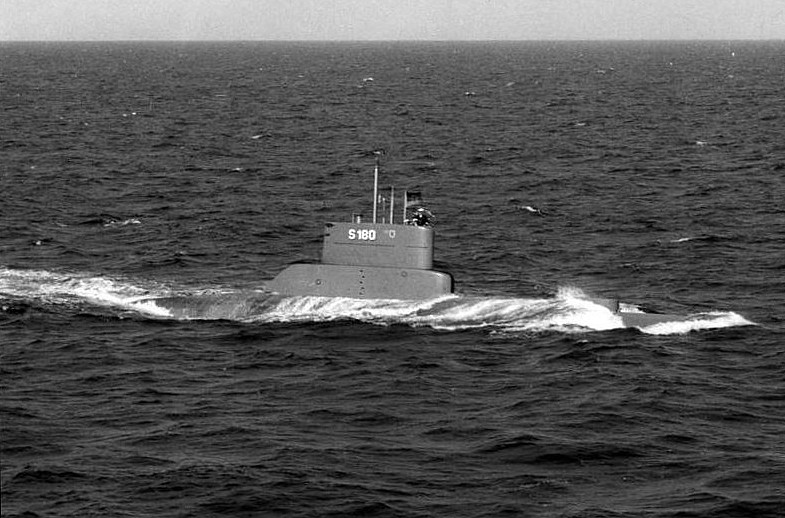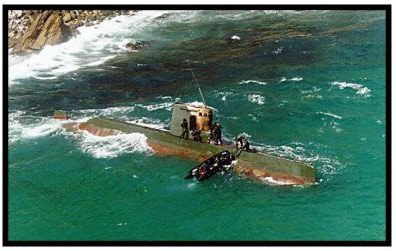Coastal submarine on:
[Wikipedia]
[Google]
[Amazon]
 A coastal submarine or littoral submarine is a small, maneuverable submarine with shallow
A coastal submarine or littoral submarine is a small, maneuverable submarine with shallow
 German submarine construction between the world wars began in 1935 with the building of 24 Type II coastal submarines. These coastal U-boats, with another eight completed prior to hostilities, made
German submarine construction between the world wars began in 1935 with the building of 24 Type II coastal submarines. These coastal U-boats, with another eight completed prior to hostilities, made

 *
*
 A coastal submarine or littoral submarine is a small, maneuverable submarine with shallow
A coastal submarine or littoral submarine is a small, maneuverable submarine with shallow draft
Draft, The Draft, or Draught may refer to:
Watercraft dimensions
* Draft (hull), the distance from waterline to keel of a vessel
* Draft (sail), degree of curvature in a sail
* Air draft, distance from waterline to the highest point on a vesse ...
well suited to navigation of coastal channels and harbors. Although size is not precisely defined, coastal submarines are larger than midget submarine
A midget submarine (also called a mini submarine) is any submarine under 150 tons, typically operated by a crew of one or two but sometimes up to six or nine, with little or no on-board living accommodation. They normally work with mother ships, ...
s, but smaller than sea-going submarines designed for longer patrols on the open ocean. Space limitations aboard coastal submarines restrict fuel availability for distant travel, food availability for extended patrol duration, and number of weapons carried. Within those limitations, however, coastal submarines may be able to reach areas inaccessible to larger submarines, and be more difficult to detect.
History
The earliest submarines were effectively coastal submarines, but as modern submarine tactics developed duringWorld War I
World War I (28 July 1914 11 November 1918), often abbreviated as WWI, was one of the deadliest global conflicts in history. Belligerents included much of Europe, the Russian Empire, the United States, and the Ottoman Empire, with fightin ...
, the advantages of rapid construction and portability encouraged development of UB torpedo
A modern torpedo is an underwater ranged weapon launched above or below the water surface, self-propelled towards a target, and with an explosive warhead designed to detonate either on contact with or in proximity to the target. Historically, s ...
launching, and UC minelaying
A minelayer is any warship, submarine or military aircraft deploying explosive mines. Since World War I the term "minelayer" refers specifically to a naval ship used for deploying naval mines. "Mine planting" was the term for installing contro ...
coastal submarines in 1915 to operate in the English Channel
The English Channel, "The Sleeve"; nrf, la Maunche, "The Sleeve" (Cotentinais) or ( Jèrriais), (Guernésiais), "The Channel"; br, Mor Breizh, "Sea of Brittany"; cy, Môr Udd, "Lord's Sea"; kw, Mor Bretannek, "British Sea"; nl, Het Kana ...
. These coastal submarines displaced only 15 to 20 percent the weight of a contemporary conventional U-boat, could be built in one-quarter the time it took to complete a conventional U-boat, and be delivered on railway wagons to operating bases in Belgium
Belgium, ; french: Belgique ; german: Belgien officially the Kingdom of Belgium, is a country in Northwestern Europe. The country is bordered by the Netherlands to the north, Germany to the east, Luxembourg to the southeast, France to th ...
. Improved versions of UB and UC coastal submarines were devised. Total production of German coastal submarines during World War I was 136 type UB and 95 type UC.
 German submarine construction between the world wars began in 1935 with the building of 24 Type II coastal submarines. These coastal U-boats, with another eight completed prior to hostilities, made
German submarine construction between the world wars began in 1935 with the building of 24 Type II coastal submarines. These coastal U-boats, with another eight completed prior to hostilities, made North Sea
The North Sea lies between Great Britain, Norway, Denmark, Germany, the Netherlands and Belgium. An epeiric sea, epeiric sea on the European continental shelf, it connects to the Atlantic Ocean through the English Channel in the south and the ...
combat patrols during the early months of World War II
World War II or the Second World War, often abbreviated as WWII or WW2, was a world war that lasted from 1939 to 1945. It involved the vast majority of the world's countries—including all of the great powers—forming two opposing ...
and then served in the Baltic Sea
The Baltic Sea is an arm of the Atlantic Ocean that is enclosed by Denmark, Estonia, Finland, Germany, Latvia, Lithuania, Poland, Russia, Sweden and the North and Central European Plain.
The sea stretches from 53°N to 66°N latitude and ...
training crews to operate ocean-going submarines. The 30th U-boat Flotilla of six Type II U-boats was transported overland on the Autobahn
The (; German plural ) is the federal controlled-access highway system in Germany. The official German term is (abbreviated ''BAB''), which translates as 'federal motorway'. The literal meaning of the word is 'Federal Auto(mobile) Track' ...
and then down the Danube
The Danube ( ; ) is a river that was once a long-standing frontier of the Roman Empire and today connects 10 European countries, running through their territories or being a border. Originating in Germany, the Danube flows southeast for , p ...
for combat patrols in the Black Sea
The Black Sea is a marginal mediterranean sea of the Atlantic Ocean lying between Europe and Asia, east of the Balkans, south of the East European Plain, west of the Caucasus, and north of Anatolia. It is bounded by Bulgaria, Georgia, Rom ...
until September 1944.
Examples

 *
* German Type UB I submarine
The Type ''UB I'' submarine (sometimes known as the ''UB-1'' class) was a class of small coastal submarines (U-boats) built in Germany at the beginning of the First World War. 20 boats were constructed, most of which went into service wit ...
* German Type UB II submarine
The UB II type submarine was a class of U-boat built during World War I by the German Imperial Navy. They were enlarged from the preceding type UB I and were more effective vessels. The boats were a single hull design with a 50-metre maximum div ...
* German Type UB III submarine
The Type UB III submarine was a class of U-boat built during World War I by the German Imperial Navy.
UB III boats carried 10 torpedoes and were usually armed with either an or a deck gun. They carried a crew of 34 and had a cruising range o ...
* German Type UC I submarine
The Type UC I coastal submarines were a class of small minelaying U-boats built in Germany during the early part of World War I. They were the first operational minelaying submarines in the world (although the Russian submarine ''Krab'' was lai ...
* German Type UC II submarine
Type UC II minelaying submarines were used by the Imperial German Navy during World War I. They displaced 417 tons, carried guns, 7 torpedoes
A modern torpedo is an underwater ranged weapon launched above or below the water surface, self-prope ...
* German Type UC III submarine
Type UC III minelaying submarines were used by the Imperial German Navy () during World War I. They displaced at the surface and submerged, carried guns, 7 torpedoes and up to 14 mines. The ships were double-hulled with improved range and sea- ...
* British H-class submarine
* German Type II submarine
The Type II U-boat was designed by Nazi Germany as a coastal U-boat, modeled after the CV-707 submarine, which was designed by the Dutch dummy company NV Ingenieurskantoor voor Scheepsbouw Den Haag (I.v.S) (set up by Germany after World War ...
*
* German Type XVII submarine
The Type XVII U-boats were small coastal submarines that used a high-test peroxide propulsion system, which offered a combination of air-independent propulsion and high submerged speeds.
Background
In the early 1930s Hellmuth Walter had desig ...
* Type XXIII submarine
* Ha-201-class submarine
* Type 201 submarine
* Type 205 submarine
The Type 205 was a class of German diesel-electric submarines. They were single- hull vessels optimized for the use in the shallow Baltic Sea. The Type 205 is a direct evolution of the Type 201 class with lengthened hull, new machinery and sen ...
* Type 206 submarine
* Sang-O-class submarine
* Gotland-class submarine
* Fateh-class submarine
* Andrasta-class submarine
See also
*List of submarine operators
The following countries operate or have operated submarines for naval or other military purposes.
Countries with currently operational submarines
* Algeria
* Australia
* Azerbaijan
* Bangladesh
* Brazil
* Canada
* Chile
* Colombia
* Ecuador
...
* List of submarine classes in service
The list of submarine classes in service includes all submarine classes currently in service with navies or other armed forces worldwide. For surface combatants, see the list of naval ship classes in service.
Ballistic missile submarines
C ...
Notes
Sources
* * * {{Warship types of the 19th & 20th centuries Submarines by type